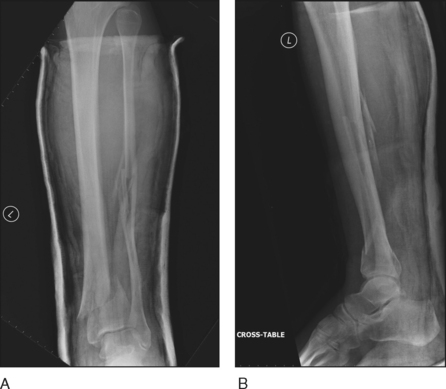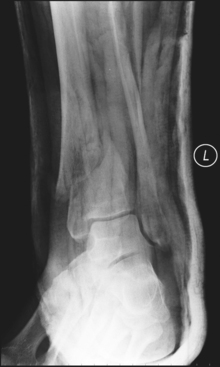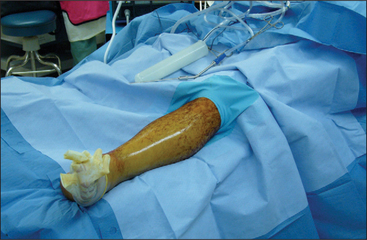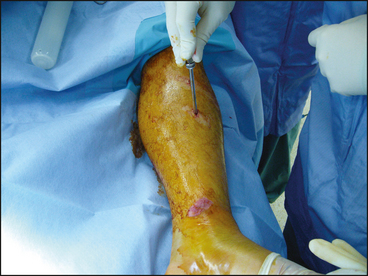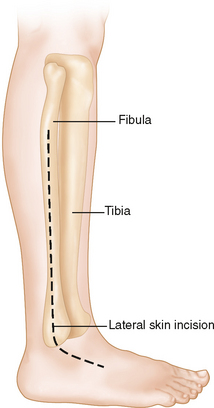PROCEDURE 34 External Fixation of Distal Tibial Fractures
Indications
 “Damage control” temporary fixation of fractures with severe soft tissue compromise such as open fractures or significant soft tissue swelling
“Damage control” temporary fixation of fractures with severe soft tissue compromise such as open fractures or significant soft tissue swelling Definitive fixation of contaminated, infected fractures, or fractures associated with severe soft tissue injuries
Definitive fixation of contaminated, infected fractures, or fractures associated with severe soft tissue injuriesExamination/Imaging
 Anteroposterior (Fig. 1A) and lateral (Fig. 1B) radiographs of the tibia, as well as anteroposterior, lateral, and mortise views of the ankle (Fig. 2)
Anteroposterior (Fig. 1A) and lateral (Fig. 1B) radiographs of the tibia, as well as anteroposterior, lateral, and mortise views of the ankle (Fig. 2)Positioning
 The patient is positioned supine on a radiolucent operating table with positioning aids, bumps, or a frame under the affected limb (Fig. 4).
The patient is positioned supine on a radiolucent operating table with positioning aids, bumps, or a frame under the affected limb (Fig. 4).Portals/Exposures
 In the majority of settings, stab wounds are made about the tibia, calcaneus, and first metatarsal to facilitate pin insertion (Fig. 5).
In the majority of settings, stab wounds are made about the tibia, calcaneus, and first metatarsal to facilitate pin insertion (Fig. 5). Fibular fractures amenable to fixation are approached from the lateral subcutaneous border (Fig. 6).
Fibular fractures amenable to fixation are approached from the lateral subcutaneous border (Fig. 6). Intra-articular plafond fractures are addressed either percutaneusly or with a formal anterolateral or medial approach as necessary and as the soft tissues allow.
Intra-articular plafond fractures are addressed either percutaneusly or with a formal anterolateral or medial approach as necessary and as the soft tissues allow.Stay updated, free articles. Join our Telegram channel

Full access? Get Clinical Tree






